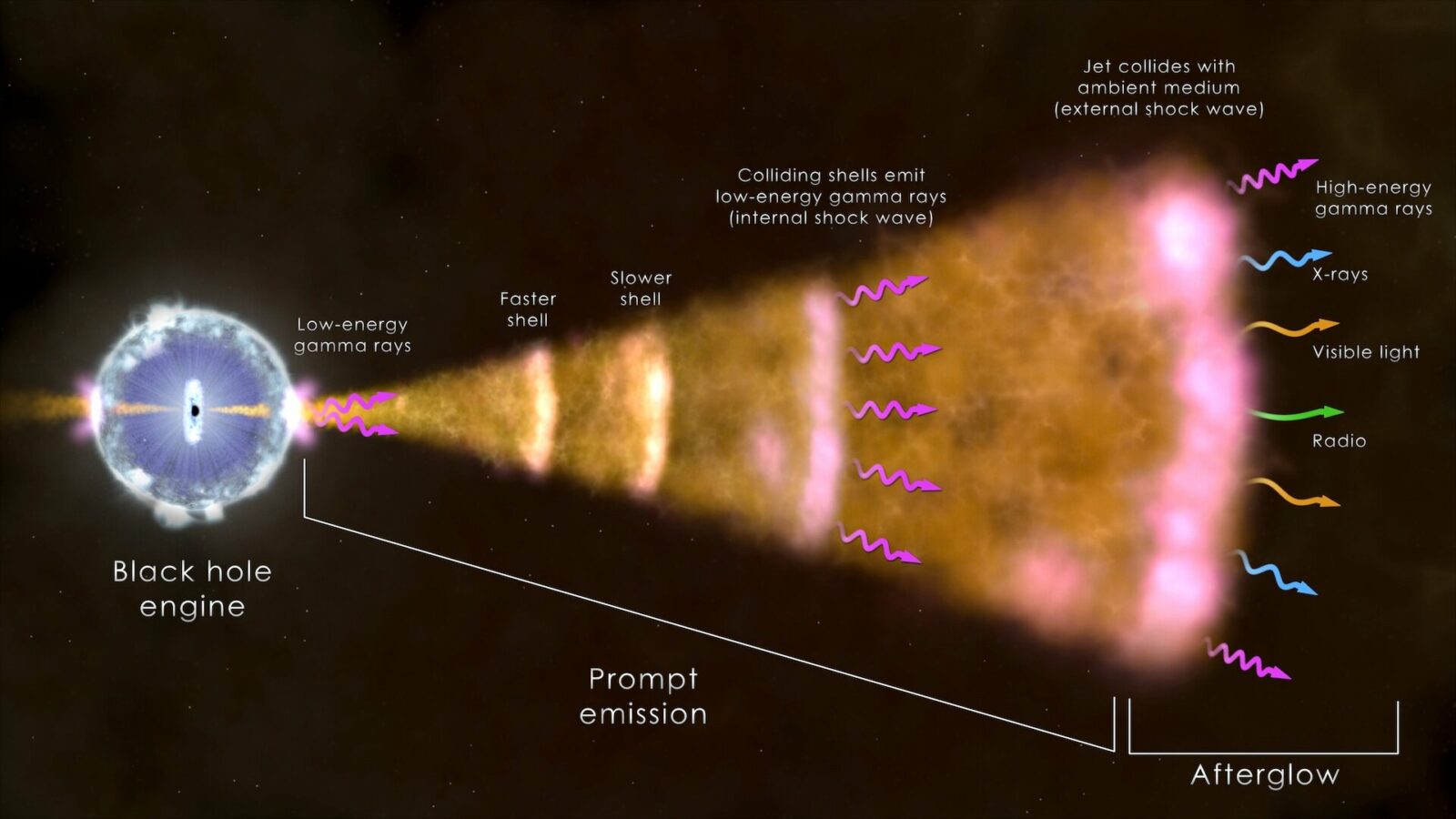This illustration shows the ingredients of a long gamma-ray burst, the most common type. The core of a massive star (left) has collapsed, forming a black hole that sends a jet of particles moving through the collapsing star and out into space at nearly the speed of light. Radiation across the spectrum arises from hot ionized gas (plasma) in the vicinity of the newborn black hole, collisions among shells of fast-moving gas within the jet (internal shock waves), and from the leading edge of the jet as it sweeps up and interacts with its surroundings (external shock). Credit: NASA's Goddard Space Flight Center
On October 9, 2022, an intense pulse of gamma-ray radiation swept through our solar system, overwhelming gamma-ray detectors on numerous orbiting satellites, and sending astronomers on a chase to study the event using the most powerful telescopes in the world.
The new source, dubbed GRB 221009A for its discovery date, turned out to be the brightest gamma-ray burst (GRB) ever recorded.
In a new study that appears today in Astrophysical Journal Letters, observations of GRB 221009A spanning from radio waves to gamma-rays, including critical millimeter-wave observations with the Center for Astrophysics | Harvard & Smithsonian’s Submillimeter Array (SMA) in Hawaii, shed new light on the decades-long quest to understand the origin of these extreme cosmic explosions. This study is part of a series of discoveries that are to be published as a collection in Astrophysical Journal Letters.
The gamma-ray emission from GRB 221009A lasted over 300 seconds. Astronomers think that such “long-duration” GRBs are the birth cry of a black hole, formed as the core of a massive and rapidly spinning star collapses under its own weight. The newborn black hole launches powerful jets of plasma at near the speed of light, which pierce through the collapsing star and shine in gamma-rays.

